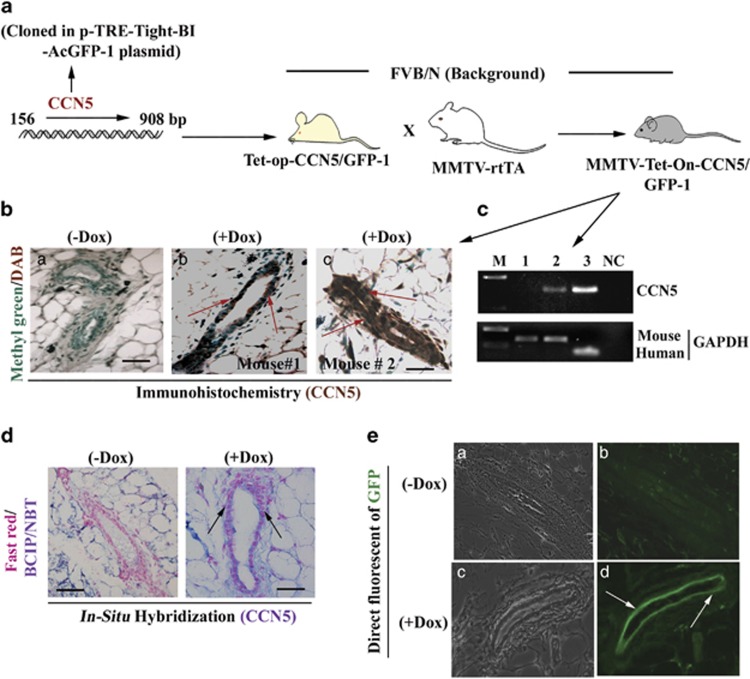Figure 2.
Generation of conditional transgenic mice bearing CCN5 and GFP transgenes overexpressed in mammary epithelial cells by doxycycline (Dox) treatment. (a) A diagram depicts the generation of CCN5-transgenic mouse (MMTV-Tet-On-CCN5/GFP-1), in which endogenous allele of human CCN5 is conditionally activated in the mammary glands by doxycycline (Dox) treatment. (b) Immuno-histochemical localization of CCN5 (DAB) in the ducts of mammary grands from Dox-untreated (a) and Dox-treated (b–c) transgenic mice. Methyl green was used as counter staining. Scale bars, 100 μm. Red arrows indicate the CCN5 expression. (c) PCR with reverse transcription analysis of CCN5 in the RNA harvested from mammary glands from Dox-untreated and treated mice. M: molecular markers. 1: untreated gland, 2: Dox-treated and 3: MCF-7 and NC: negative control. GAPDH is used as loading controls. (d) Localization of CCN5 mRNA expression (BCIP/NBT) in the mammary ducts from Dox untreated (−Dox) and Dox-treated (+Dox) CCN5-transgenic mice using in situ hybridization. Scale bars, 100 μm. The arrows indicate the CCN5 expression. (e) Detection of direct fluorescence of GFP in the ducts of mammary glands from Dox untreated (−Dox) and Dox-treated (+Dox) CCN5-transgenic mice. (a and c) The examples of bright fields in Dox untreated and treated samples, and (b and d) the examples of GFP-fluorescence in Dox untreated and treated samples.

